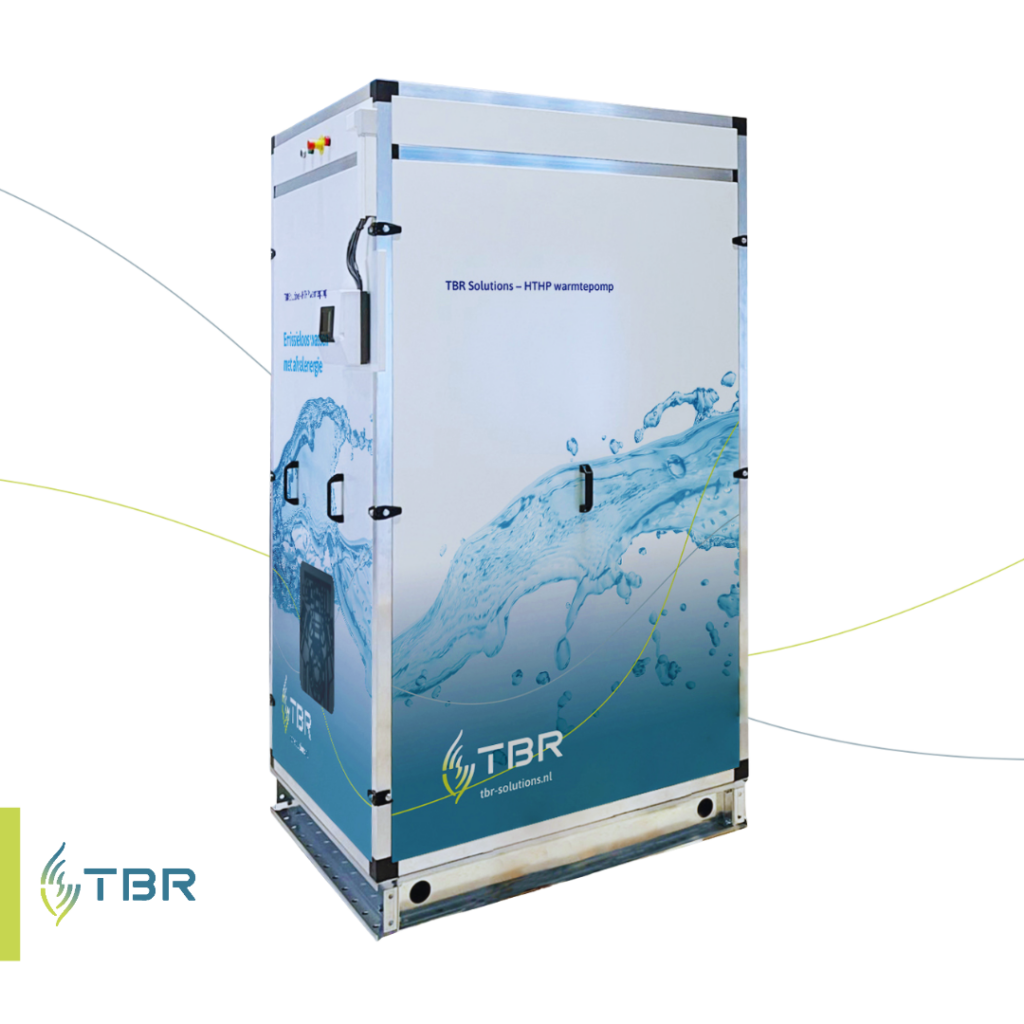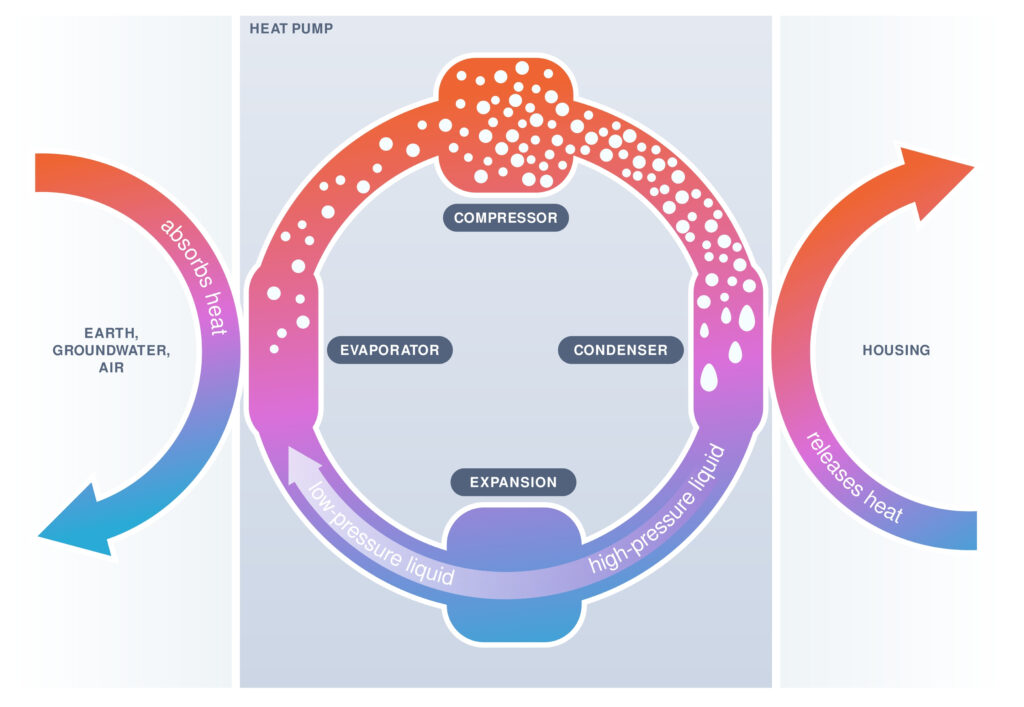Technical functioning of industrial heat pumps
Heat pumps are a sustainable energy-saving heating alternative, with versatile industrial applications such as heating water for cleaning processes. When used to recover energy from waste flows, the CO2 emission of a heat pump is zero.
How does a heat pump work?
Heat pumps essentially transfer thermal energy from one place to another. They absorb environmental heat from a source and concentrate it, resulting in a higher temperature, and subsequently release that heat at the destination. Within the heat pump, a fluid refrigerant circulates through a compressor, condenser, expansion valve and an evaporator to continuously transfer energy.
What does the refrigerant in a heat pump do?
Heat pumps use refrigerants with a low boiling point as a medium to transport energy. The refrigerant absorbs residual energy when it flows past the initial energy source, such as wastewater. This thermal energy is then concentrated, resulting in a higher temperature, and transferred to the outgoing side of the ‘HG Heat pump HTW’.
Choice of refrigerant
Various refrigerants are suitable for application in heat pumps. At TBR Solutions, we limit our choices to natural refrigerants. The environmental impact of these natural alternatives is minimal compared to standard synthetic substances.

‘HG Heat pump HTW’
The 4 steps of the HTHP Heat pump
The HG Heat pump HTW works by evaporating a natural refrigerant (a fluid) at a low temperature (1) and condensing the vapor at a higher temperature (3). In the former part of the process the boiling point must thus be lowered, while in the latter part is must be increased.
The boiling point of a fluid can be increased by raising the pressure with a compressor (2). At the other side of the process, the boiling point must be lowered by decreasing pressure with the help of a turbine or expansion valve (4).
The entire process of evaporating, compressing, condensing and expanding the circulating refrigerant takes place in a closed system: the thermodynamic cycle. The same cannot be said for labour and thermal energy: net labour is added through the compressor (in the form of electrical energy) and heat is transferred from the evaporator to the condenser. The condenser then releases the heat to the incoming process flow at a higher temperature.
Schematically, the process looks like this:

(in) EARTH = wastewater (input)
(out) HOUSING = warm water (output)
Application of industrial heat pumps
Heat pumps are most commonly known for their implementation as a heating system in residential buildings, but their actual potential stretches much further. TBR Solutions bridges the gap between heat pump technology and industrial processes. For example: we reuse residual energy from wastewater that would otherwise be lost through sewers or roofs. We reapply this residual energy to heat fresh, incoming water to be used in cleaning processes.
Transforming energy contained in waste flows into an accessible energy source is a complicated endeavour. This requires a complete analysis of the current process and how that process will be impacted by the implementation of new technology.
As an expert in this field, TBR Solutions offers worry-free turn-key solutions. Read about a project in which we apply the technology of heat pumps in the laundry industry.
Efficiency
Unlike traditional heating methods that generate thermal energy, heat pumps use their electricity input to transfer existing thermal energy. This principle is the secret behind the exceptional performance of heat pumps: they typically yield far more energy than the amount of electric energy required to power them.
The performance of an individual industrial heat pump varies depending on several factors, such as input and source temperature. The conventional efficiency metric to express this performance is the COP, the ‘coefficient of performance’. The COP signifies the ratio between the amount of transferred thermal energy and the amount of electrical energy required for that transfer.
Return of the ‘HG Heat pump HTW’
The return of a industrial heat pump is codetermined by the pricing of both fossil fuels and other energy sources, and possible subsidy options. As a general rule, our ‘HG Heat pump HTW’ features;
- An attractive average payback period of 5 years, depending on several factors. Alternatives such as steam boilers might have shorter payback periods, but this difference is greatly outweighed by our heat pump’s current return on investment and general sustainability expectations. The consistently high return and predictable payback period make the ‘HG Heat pump HTW’ the superior option.
- A considerable reduction of the installation’s CO2 emission. In addition to its environmental merit, this reduction is also relevant when considering that the expected tax per net ton of CO2 will reach €125 in 2030. The ‘HG Heat pump HTW’ is thus a sustainable and financially sound option.
- The ability to supply the energy demand of laundry processes with 100% reclaimed energy.
- Consistently high efficiency. Our ‘HG Heat pump HTW’ is capable reaching a COP of approximately 4,8 at higher temperatures. This means that 1 kW input is enough for the output of 4,8 kW of thermal energy!
For more information regarding this technology, please contact:

Jaap Reinders,
Sr. Solutions Sales Engineer TBR Solutions
